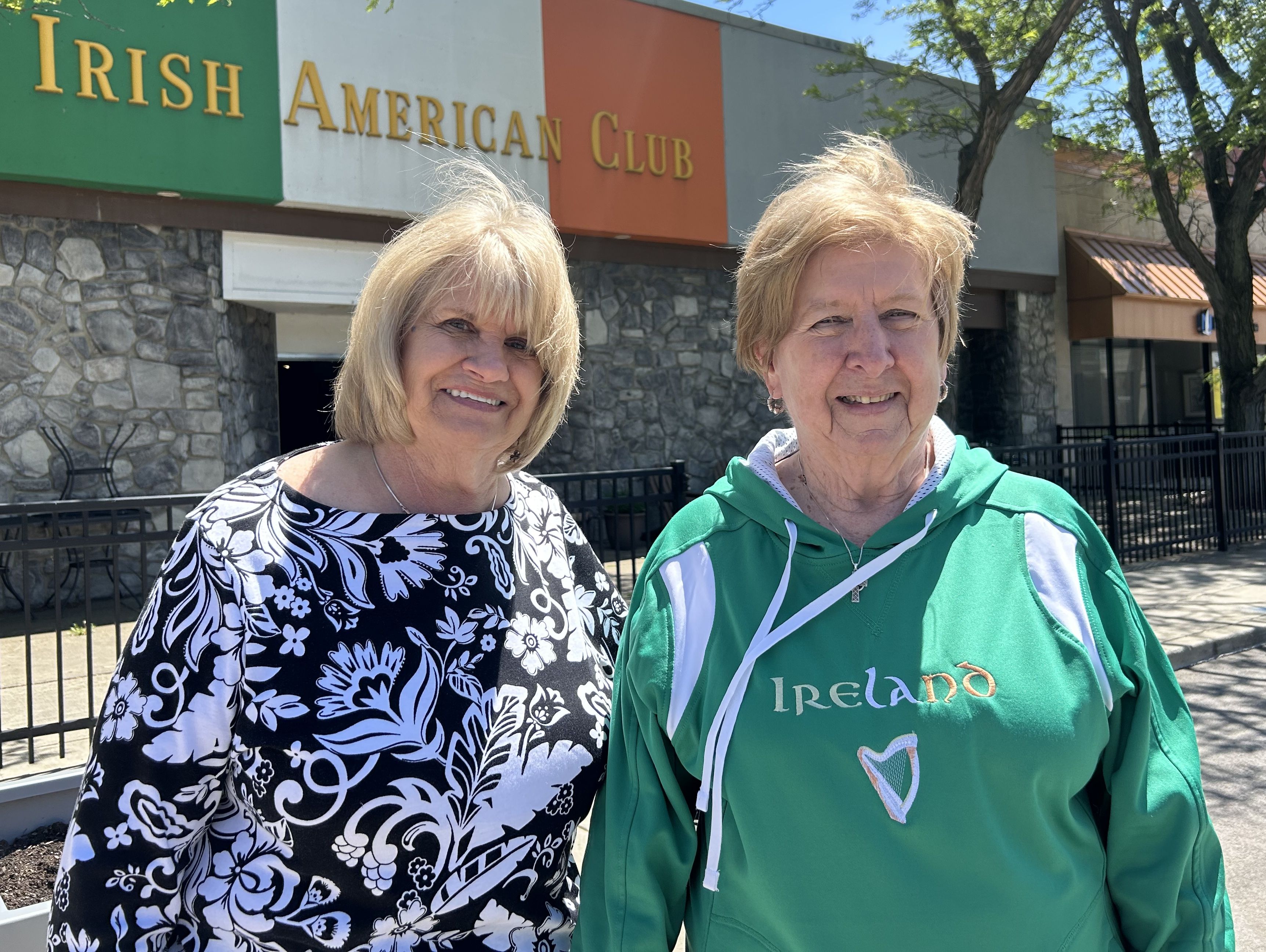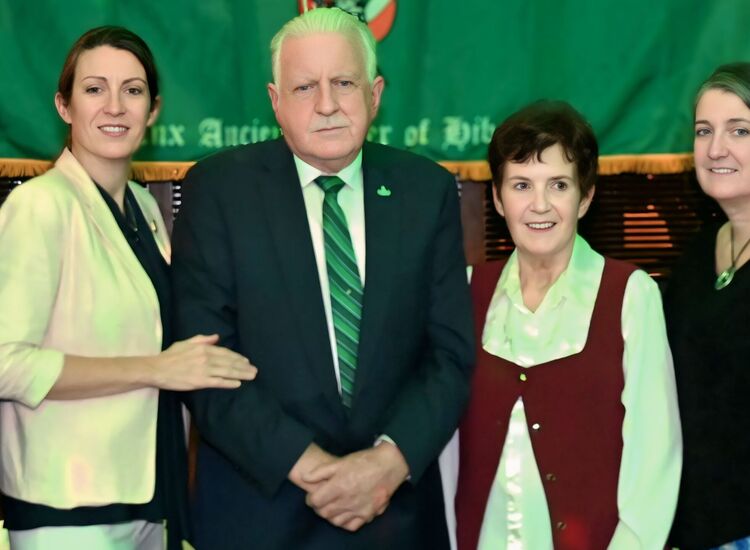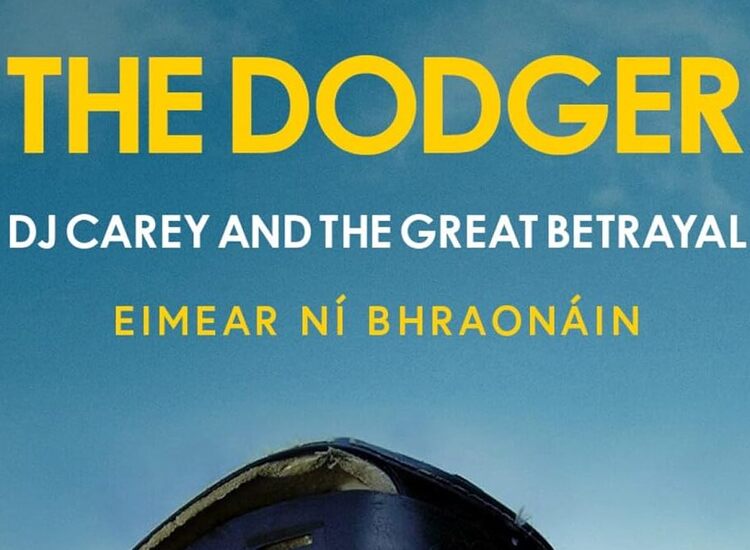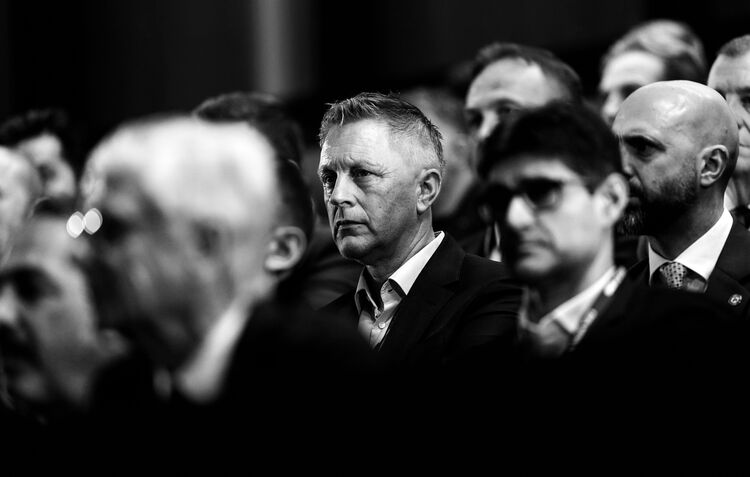It's correct what they say about Cleveland, Ohio, it really is a bastion of the Irish. But for those in the know, that's only half the story; for in truth the city is more an outpost of Co. Mayo than an offshoot of Ireland.
That concentration of the Irish in the Erie Lake shore city was, in large part, due to the first arrivals sending word back of work and a place to rest to their relatives in Co. Mayo. But you wonder if there's something too in the belief that only a hardy people from the rugged, windswept, northern Connacht county could feel at home amid the harsh winters of Cleveland.
Whatever cemented the connection, this much is certain, the Irish of Cleveland are as true to the green and red of Mayo as they are to the red, white and blue or the green, white and orange.
The enduring Cleveland-Mayo link is best epitomised by the sister city status accorded the cultural capital of Co. Mayo — Achill Island. Established to acclaim in 2003, that island to metropolis partnership — surely unique in the sister city annals — was 'reconsecrated' with much fanfare in 2023. Undoubtedly, Mayo native Taoiseach Enda Kenny — in office from 2011 to 2017 – gave that county connection an extra leg-up, and not just when he visited the city in 2012.
Cleveland St. Patrick's Day Parade: 'The biggest single day event in the city of Cleveland' https://t.co/omFrrknL5r
— News 5 Cleveland (@WEWS) March 17, 2025
While the bedraggled new arrivals from Ireland settled first in the poorest parts of Cleveland, the Irish soon emerged as a formidable political force in the city. Among the 'early adopters' were John H. Farley ("Honest John") and Martin A. Foran. Farley was born in Cleveland in 1846 to Irish immigrant parents and served as mayor twice (1883–84 and 1899–1900). Civil War veteran Foran, a first generation Irish, moved to Cleveland in 1868. He became a prominent labor leader, was elected to the U.S. House of Representatives, and later served as a judge. More recently, Cleveland businessman Edward Crawford, at the time just 80-years-young, was appointed U.S. Ambassador to Ireland by President Trump during his first term as President.
Galvanised by its new base, membership in the club went from "300 to 700 overnight" and at its peak was 3,000-strong. Today, the club has 1,350 members on its rolls - an impressive number at a time when the onetime flood of emigrants from Ireland has slowed to a trickle.
Today, absent fresh immigration from the Emerald Isle, the Irish wave in Cleveland has crested but the presence of not one but two dynamic Irish American Clubs — East Side and West Side — plus the Mayo Society powerhouse ensure that the Tricolor still flies on the southern shore of Lake Erie. Indeed, the roll call of organisations involved in the annual St Patrick's Day Parade, which along with only a handful of parades across the U.S. always takes place on March 17, is testament to the enduring strength of the Cleveland Irish. The auspicious list includes, Irish Network Cleveland, The Irish American Law Society, The Shamrock Club, Celtic Fest Ohio, the Greater Cleveland Police Emerald Society, the Pádraig Pearse Society, St Pat's-St Jarlath's GAA and Cleveland Comhaltas. Up to 300,000 Clevelanders turn out to cheer on the 10,000 parade participants among them thriving AOH and LAOH divisions in what is a Hibernian hotspot.
When this author, post-Cleveland marathon exertions, visited the East Side Irish American Club on a sunny May afternoon, rolling out the red carpet were community stalwarts and couples Bonnie and Walter McNally and Pat and Bill Homan. If the Cleveland Irish did royalty, Pat would qualify: her dad fought with the Mayo Flying Column, departing for America after the defeat of republican forces in the Civil War. "The first Irish worked as maids and laborers," explains Pat, "and settled at what was known as The Irish Bend on the Cuyahoga River, the poorest part of the city." Cleveland's meteoric civic rise began with the arrival of the Ohio and Erie canal. The heavily Irish immigrant workforce that built the canal took residence in the hardscrabble Flats, adjacent the Irish Bend, working first on construction and later in the factories which sprang up along the river.
This Year’s St. Patrick’s Day Finale in Cleveland, Ohio pic.twitter.com/0fbdSMhpbI
— Gabe Wasylko (@GabeWasylko) March 17, 2025
Powerful Irish communities put down roots in both the east and west of Cleveland, birthing two landmark Irish clubs. "The East Side Irish Club opened in 1978 and provided a focus for the many Irish activities," recalls founding member Bill Homan who was among 125 charter members putting up $100 apiece to fund the purchase of what was a sprawling two-storey furniture store. "Once opened, we had the Sheila Murphy Dance School, Irish festivals, comhaltas and the GAA as well as regular social nights bringing the community together. In short, we had our own place and were no longer nomads." Boasting a pub, a library, a mammoth function space and numerous meeting rooms, the Club is a beacon for the Irish of the Euclid suburb of Cleveland.
Galvanised by its new base, membership in the club went from "300 to 700 overnight" and at its peak was 3,000-strong. Today, the club has 1,350 members on its rolls — an impressive number at a time when the onetime flood of emigrants from Ireland has slowed to a trickle — all of whom get a personally-addressed Schanachie newsletter through the post each month, courtesy of Pat and Bonnie.
The Cleveland Irish community rallied also to the call of Project Children in the seventies, providing summer homes for hundreds of children from the embattled North. Later, the city's Irish put their shoulder to the wheel to support the nascent peace process, welcoming Gerry Adams to the city. REBEL SPIRIT: Bill Homan points out Capt. John Corcoran, the father of his wife Pat, in a photo of the famed Mayo flying column while Walter McNally looks on. 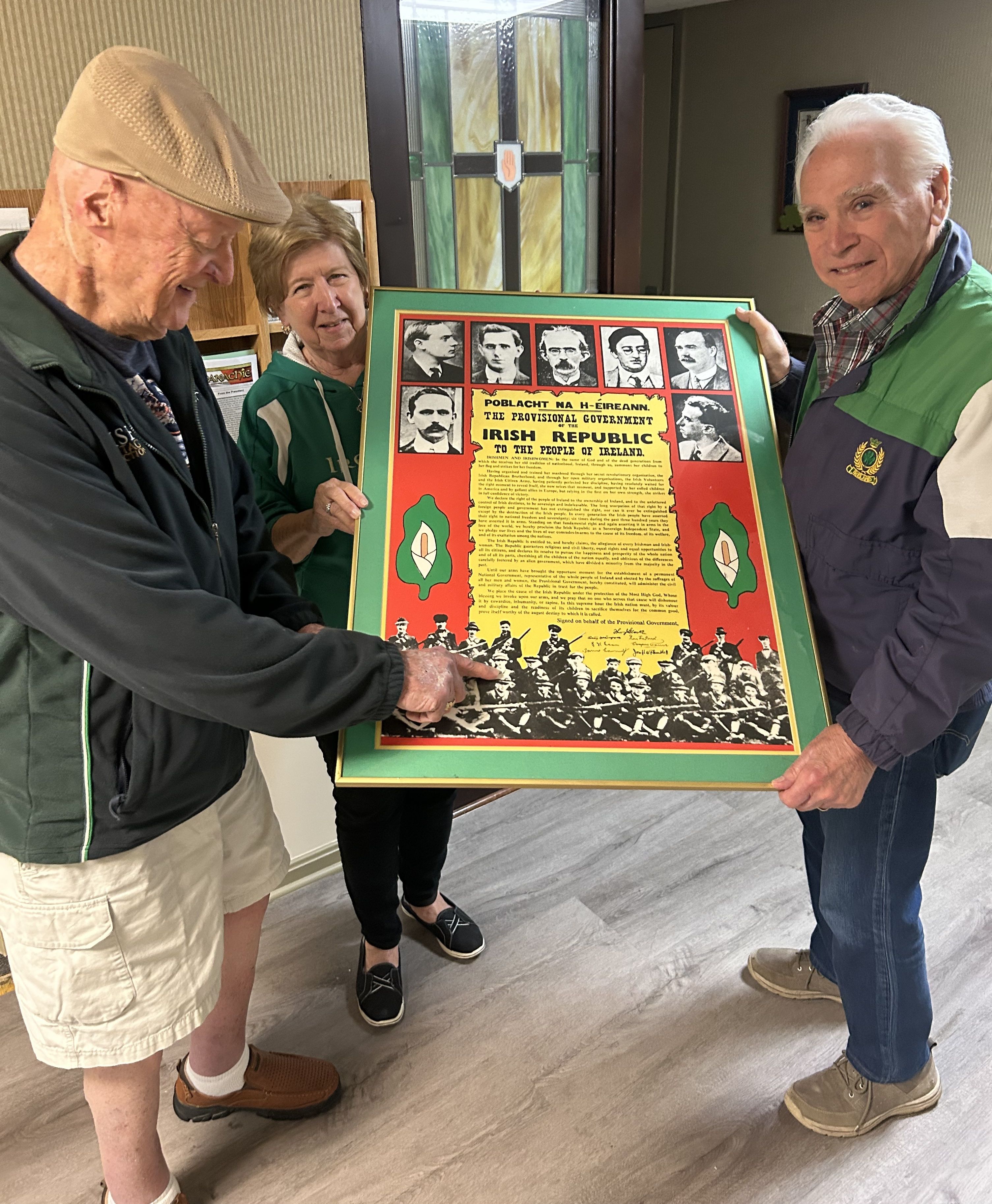
Today, while proud of its storied past, the leadership of the East Side Irish American Club has its sights firmly set on the future. "We have brought a group together to discuss how the Irish American Club of Euclid will fare in 2050 — what steps do we need to take now to ensure a bright future," explains Bonnie. "We are looking at future growth and development and asking ourselves how do we engage the young generation when they don't really have the time to participate in club activities. The young ones enjoy the entertainment side of the club but getting them to be part of the wider work of promoting Irish culture is hard — it's the same with all nationalities across Cleveland — but we know there are some areas, like the GAA and Irish dance, which do resonate with them."
But as the stalwarts who built the East Side Irish hub prepare to hand over the baton, signs of a revival of interest in all things Irish in the city serve as vindication of their trailblazing efforts. Certainly, that renaissance of the Cleveland Irish community has been boosted by Aer Lingus' new, direct Dublin-Cleveland service which has put the city back on the Irish American map. Meanwhile, significantly, The Commission on the Future of Ireland included Cleveland among the staging points in its North American tour — Sinn Féin MP Pat Cullen spoke at the Commission's Cleveland hearing last week. And that event coincided with a screening in the West Side Irish Club of the compelling documentary 'Murder of a GAA Chairman' by director Trevor Birney (whose credits include 'Kneecap'), which explores state involvement in the 1997 loyalist assassination of South Derry Gael Seán Brown.
As she posed with Bonnie for a curbside photo outside the club, Pat Homan remarks that the demographics of Euclid, home to the East Side Club, have changed immeasurably in the five decades since the club first opened its doors — as indeed has the make-up of Cleveland itself. But unchanged is the abiding love of Ireland, itself transformed in those same 50 years, among the East Side Irish. "We'll pass on our interest in Ireland to the next generation here in Cleveland," says Pat, "but," she adds, perhaps mindful of her own father's sacrifices, "we're also supportive of the efforts back home towards the next stage of the peace process and Irish unity."

